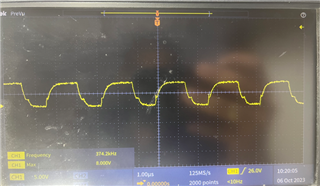Hi TI Team,
Need to Pass CISPR25 Class 4 in conducted emission test for the TPS92692 IC.
I build a SEPIC converter to drive LED with TPS92692Q1. (refer to EVM schematic)
Input voltage =8~18V
LED = 4LED in series (VF=3.1~3.6V) ILED=1A
Ris = 0.0047R / RT= 22K / C_DM = 100nF
Design is working fine during normal mode of operation with the respect of the input voltage level 8-18V.
CONDCUTED EMISSION TEST : CISPR25 CLASS 4 - But i am facing issue with the frequency range of 55mhZ to 108mhZ. The dB limit is to pass for this range is 24dB average limit.
The level i have archived from frequency range is 55mhZ to 108mhZ is 26dB. But i have little bit concern regarding Mosfet gate resistor i have change from 10ohm to 50ohm and the level of the dB is reduced by 8dB with out change in mosfet gate resistor i have observed 34dB but after changing resistor value 50ohm the dB limit we have achieved 26dB.
This is ok from design point of view and what is the limit to tune this gate resistor. As per the data sheet i have to fix this resistor to 12ohm. I am attaching the image for refrence.
What would be the impact that we are facing for changing this gate resistor to 50ohm.
DO you have any calculation for the gate power resistor.
Kindly provide your valuable feedback regarding this point.
Best Regards,
Pankaj Talwar




